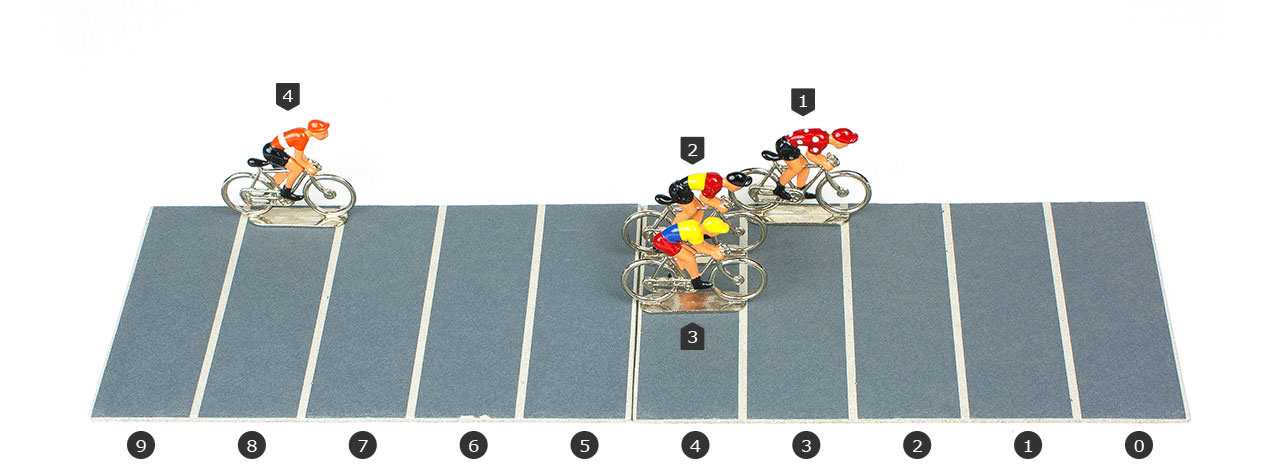


The winner is not the first rider to cross the finish line, but the one who reaches the furthest among all the cyclists that cross the finish line in the same round. It is sprint time.
Two cards from the start of the circuit are taken and placed in front of the finish line to prepare for the riders’ arrival. The 10 boxes of these two cards are given a score from 9 to 0 (the furthest from the finish line, see image)..
Imagine that only four cyclist have crossed the finish line in this round. The winner’s score is R.3, where R equals the number of played rounds. If we have not counted all the rolls, we will say that R equals 1, so the first rider scores 1.3. 1 for having moved past the finish line on the first round the finish line has been crossed, and .3 because with his/her last roll (sprint) the rider has reached the number 3 box. (If a rider with the final roll moves past the 0 box, this is very unusual, this rider is placed in the box number 0 and will score 1.0).
The second one (2º) scores 1.4.
The third one (3º) gets the same score 1.4, but as the rider arrived later, is the third one.
The fourth one (4º) scores 1.9.
All these scores are noted down, and the extra board cards are emptied, so the riders which arrive on the next round can be placed there. These riders score will be 2.n, where "n" is the box number reached in their last roll, as for the previous riders.
Those who cross the finish line on the third round will score 3.n and so on. All the riders are ranked in this way. Each one of them will get a score (or time). These scores will create the overall ranking, stage after stage.